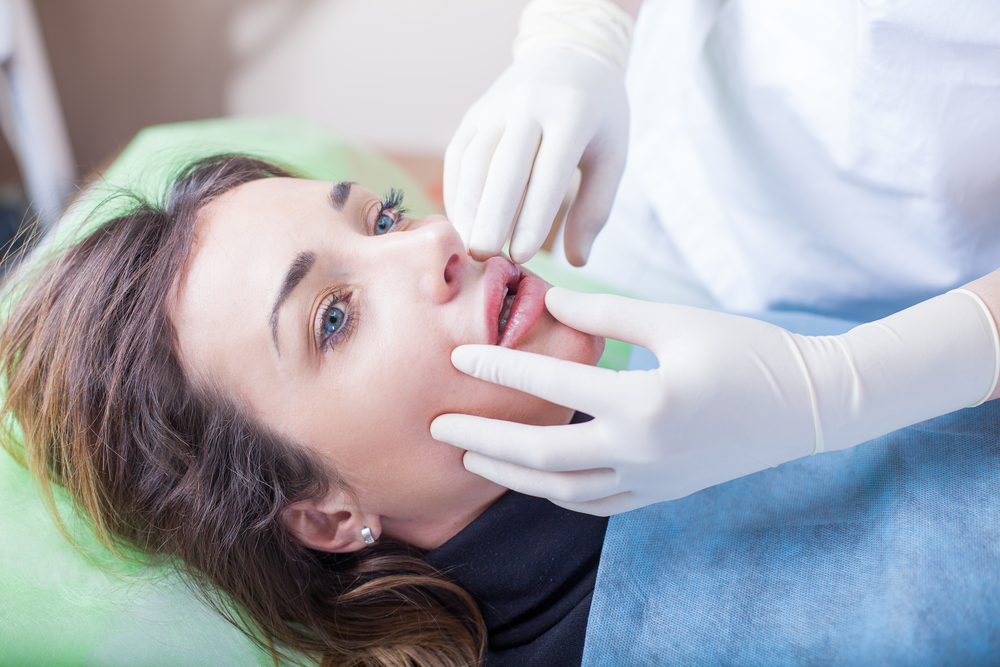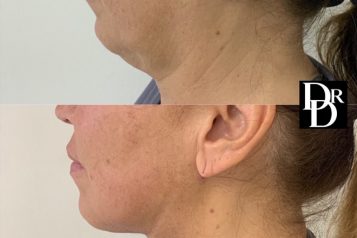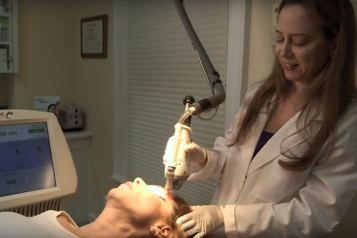You may have recently heard a close friend of yours talking about their experience when they “had their facelift done without general anesthesia”. It is possible that your first impression was: Is that even possible? The answer is yes. More and more aesthetic surgical procedures are done under local anesthesia or moderate sedation. This is not something new in plastic surgery, but something that is trending. The benefits of moderate sedation, when compared to general anesthesia are vast and, potential candidates continue to be concerned about “going under” or having general anesthesia despite its proven safety.
 Photo Credit: www.shutterstock.com
Photo Credit: www.shutterstock.com
What does it mean to have surgery under moderate sedation? How is it different from general anesthesia?
First, I think is important to briefly mention what are the goals of anesthesia when it comes to having surgery. The main 3 goals of anesthesia are:
- Diminish anxiety and decrease awareness of the surrounding environment
- Amnesia (no recollection of the event)
- Eliminate pain
All of them can be accomplished without the patient needing to “go under” (general anesthesia), which is the main concern and limitation in 7 out of 10 patients wanting to do cosmetic surgery.
The two most common scenarios I have encountered regarding modern anesthesia techniques used for facial plastic surgery procedures are:
Scenario #1
Patient: “Doctor, can the surgery be done under local anesthesia?”
Description: In this scenario, the patient receives oral sedatives (e.g. Valium, Ativan) and/or an oral pain medication dose (e.g. Percocet, Vicodin) 30-60 minutes before the surgeon injects local anesthesia (e.g. Lidocaine, Xylocaine) to the area to be treated. In some instances, specific nerves can be injected and “blocked” to disrupt the sensory pathway to an area where surgery can then be performed without pain.
Scenario #2:
Patient: “Doctor, can I have my surgery done under sedation?”
Description: Twilight anesthesia is the layman’s term for moderate sedation. In this scenario, the patient may also receive oral sedatives and pain medications in anticipation to a procedure, in addition to receiving IV medications to help with pain and keep them asleep. Once the patient is comfortably asleep, then the surgeon injects local anesthesia to numb the area to be treated. Continued monitoring of the patient’s mental status, oxygenation, airway, heartbeat, and blood pressure is performed every 5 minutes and will guide titration of the medications administered during the procedure. In my practice, I prefer a board-certified anesthesiologist administering all IV medications and monitoring the patient’s vitals while I as the surgeon take a more focused role in performing the surgery while being conscious of the patient’s mental status and anesthesia state. The ideal state of mind is that where the patient is asleep, but easily arousable upon verbal command or light touch.
In both scenarios, the key to a successful outcome is in selecting the appropriate patient and administering good local anesthesia so that we can limit the amount of IV medication doses needed.
What are the advantages of moderate sedation in cosmetic surgery?
The advantages of moderate sedation when compared to general anesthesia are many and include the following:
- No need for endotracheal intubation
- Less intra-operative bleeding which translates to shorter operative time
- Decreased risk for deep vein thrombosis (clots)
- Faster recovery
- Less post-operative swelling
In most facial aesthetic surgeries, I cannot justify general anesthesia as a better alternative for the patient. Some surgeons still prefer to do surgery under general anesthesia for their own comfort, for example: to avoid “the patient from moving”. This mentality is not patient-focused and deprives patients from a better available alternative. On the other hand, certain procedures and in some patient’s general anesthesia is the only way to go.
The limitations in performing surgery under moderate sedation are could be related to the patient, the surgeon’s experience, or the particular nature of a procedure.
 Photo Credit: www.shutterstock.com
Photo Credit: www.shutterstock.com
Who is a NOT a candidate?
Some of the most common features I evaluate in patients to see if they can have their surgery done under conscious sedation are:
- Is the patient overweight?
- Neck circumference
- Neck mobility
- History of snoring or sleep apnea?
- Level of anxiety
- Can you open your mouth widely?
- Size of the tongue in relation to the oral cavity
- General Medical Exam
If any of these apply to you, then conscious sedation may not be an option for you. It is important that any patient considering having surgery under conscious sedation finds a surgeon with the appropriate experience, knowledge, and team.
Which plastic surgery procedures can be done under moderate sedation?
Most facial aesthetic surgeries can be performed under conscious sedation in the appropriate patient. Moderate sedation is my preference when I perform eyelid surgery and facelifts. I have noticed a tremendous difference over general anesthesia more so with decreased swelling and much faster recovery time.
Other commonly performed facial plastic surgeries under moderate sedations are endoscopic brow lifts, upper and lower blepharoplasty, lip lifts, facial fat grafting, facelifts, mini-facelifts, neck lifts, liposuction, nose surgery, ear surgery, mole excisions, and scar revisions among others.
With an experienced team of board-certified anesthesiologists, OR staff, and a qualified surgeon, many breast and body procedures can also be done safely with conscious sedation although in these cases the preferred method for most surgeons continues to be general anesthesia.
For more on Dr. Rodriguez-Feliz, visit his Haute Beauty profile.
For more information, visit Dr. Brian A. Levine's social media:

























